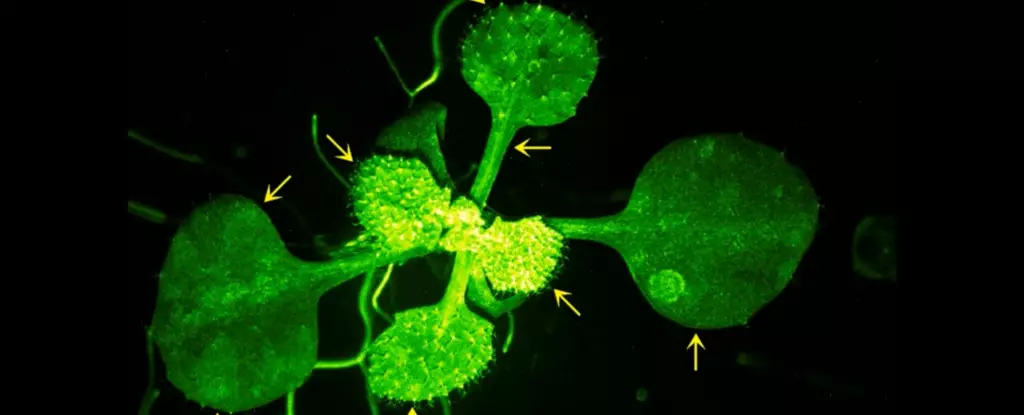Plants, often underestimated in their complexity, have a secret way of communicating and protecting themselves from harm. Through the release of airborne compounds, plants are able to repel herbivores and warn neighboring plants of potential dangers. This fascinating mechanism has been studied since the 1980s, with over 80 plant species known to utilize this defense system.
In a recent study conducted by Japanese researchers, real-time imaging techniques were used to observe how plants receive and respond to these aerial alarms. Unlike previous studies that focused on how plants send messages, this research delved into the previously unknown territory of plant reception. By transferring compounds emitted by injured plants onto undamaged plants, the researchers were able to observe the responses of the recipient plants through a fluorescence microscope.
The study utilized genetically modified plants with biosensors that fluoresced green in response to an influx of calcium ions. Calcium signaling is a crucial communication mechanism in plant cells, similar to its role in human cells. By measuring calcium signals in response to volatile compounds released by wounded plants, the researchers identified specific compounds that induced calcium signaling in the recipient plants.
Through further analysis, the researchers identified that compounds such as Z-3-HAL and E-2-HAL were responsible for triggering calcium signals in the plants. By engineering plants with fluorescent sensors in specific cell types, such as guard, mesophyll, and epidermal cells, the researchers were able to pinpoint the cells that responded first to the danger cues.
Guard cells, mesophyll cells, and epidermal cells were found to play crucial roles in the plant’s response to danger cues. Guard cells, which control the opening and closing of stomata, were observed to generate calcium signals within minutes of exposure to the compounds. This suggests that stomata act as the “nostrils” of the plant, allowing it to respond effectively to potential threats.
Plants are not as passive as they may seem. Through the release of airborne compounds, plants are able to communicate and protect themselves from harm in a sophisticated and efficient manner. The recent study sheds light on the intricacies of plant communication and response mechanisms, providing valuable insights into the hidden world of plants. As we continue to unravel the mysteries of the plant kingdom, we gain a deeper appreciation for the intelligence and resilience of these silent organisms.


Leave a Reply